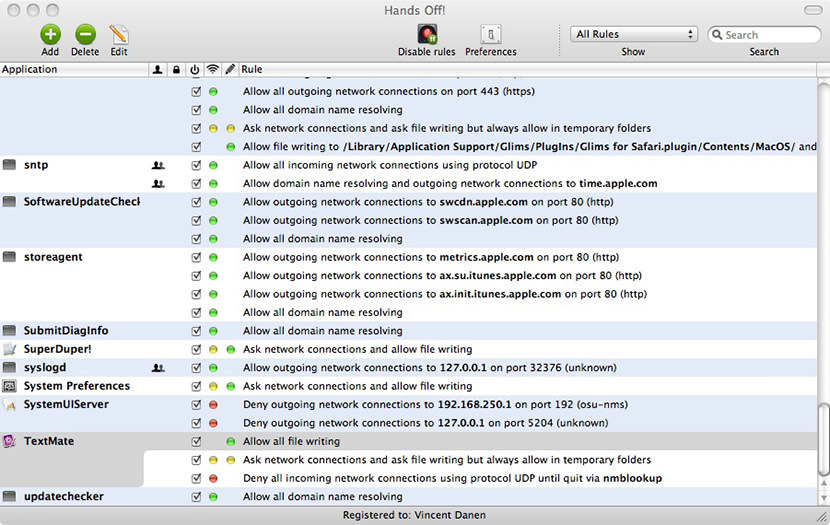


Configure the firewall fully before turning it on (especially if you’re doing so through something like Casper, FileWave, Munki, or Absolute Manage where you might kick yourself out of your session otherwise).Open Activity Monitor while my app is running. I grow weary of clicking 'Allow' fifty or more times a day, and so I seek a way of permanently adding my app to the Firewall's list of permitted apps.
#Mac os firewall apps mac os x#
This is the standard Firewall message that Mac OS X uses for all unsigned, networked applications.
#Mac os firewall apps windows#
Interpreting the Windows Firewall log The Windows Firewall security log contains two sections. In the Details pane, under “Logging Settings”, click the file path next to “File Name.” The log opens in Notepad. On the main “Windows Firewall with Advanced Security” screen, scroll down until you see the “Monitoring” link.

If it is legitimate, often the folder provides decent information. How can I use Windows PowerShell to find more information? Look at the path to the executable to find information about a process. I noticed a process and I am unsure of what it does. Summary: Use Windows PowerShell to find the path of the executable for running processes. When you are done with your Mac and using Mac apps, be sure to thank your parents for buying it for you. You’re 12 years old, that’s wonderful, keep it to yourself. Great, everyone is glad that you got to check which processes were running in OS X, but nobody needs your weird political and social commentary.


 0 kommentar(er)
0 kommentar(er)
